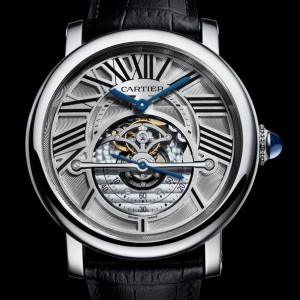Fascinating story on the R160 billion/year luxury Swiss watch export market by Michael Skapinker in the Financial Times last week. How ironic that the main ingredients of those luxury watches – gold and diamonds – do not naturally occur in Switzerland. Yet most of the profits are made by the gnomes of Geneva and their shareholders, while sick African miners are left to sue for healthcare benefits after generations spent mining those very commodities.
The luxury watch market all but collapsed on Christmas Day 1969 when “the Seiko Quartz Astron 35SQ was presented in Tokyo. It was accurate to within one minute a year.” Way more accurate than the flywheels and springs of the finest analogue watch. As Michael tells it “the impact of quartz on the watch making industry was devastating. A large number of manufacturers simply disappeared . . . Older watchmakers were forced to retire and the younger ones tried to change occupation. Watch making schools closed and gloom hung over an entire stricken profession.”
Yet today they’re back in the shape of a R160 billion money spinner for the Swiss alone. As Michael points out, no one is making “platinum typewriters or ruby-encrusted slide rules” while the Encyclopedia Britannica gave up the dead-tree game last week. What did watchmakers get right? Aesthetic appeal and a celebration of craftsmanship. But above all big brands – Jaeger-LeCoultre, Pannerai, Cartier.
Who else is winning the luxury wars? Michael points out that fine art has beaten off the challenge of photography and Photo Shop and he has good news for dead-tree bookworms. “I suspect there will still be a market for lovingly produced, hand-sewn hard covers. I may not be a luxury watch buyer, but I would happily fork out for one of those.”
So what about fine wine? Well the first growths of Bordeaux and grand crus of Burgundy are clearly fighting their corner. But in South Africa, high quality, low price, large volume wines like Obikwa and Two Oceans have ripped the stuffing out of the mid-priced market. Why pay R120 for an estate Syrah from Stellenbosch when a R30 Obikwa from all over outperforms in a blind tasting?
Which is like asking why drop $90,000 on a Cartier when a Swatch is more accurate. The only way forward for low volume artisanal wines is to maximize craft and authenticity which may or may not be synonymous with terroir, depending on your style. Organic and biodynamic wines have yet to be made on an industrial scale (certainly in SA) so this leaves a gap. As does emphasis on the craftsmanship of the winemaker – a feature that the Cape Winemakers’ Guild cleverly exploits and which is reflected in the stellar prices achieved at their annual auction.
All food for thought for the Cape Estate Owners Association that various powerful personalities are trying to resuscitate at the minute. But the rumour that Johann Rupert, chairman of Richemont and largest investor in SA wine, has broken ranks is worrying as he’s the man largely responsible for the renaissance of the luxury watch business. When he turned 60, he handed out 60 special edition watches to his friends. Team SA without Johann is like the Springboks without Schalk Burger, the Proteas sans Jacques Kallis or Die Antwoord without Yo-Landi.




